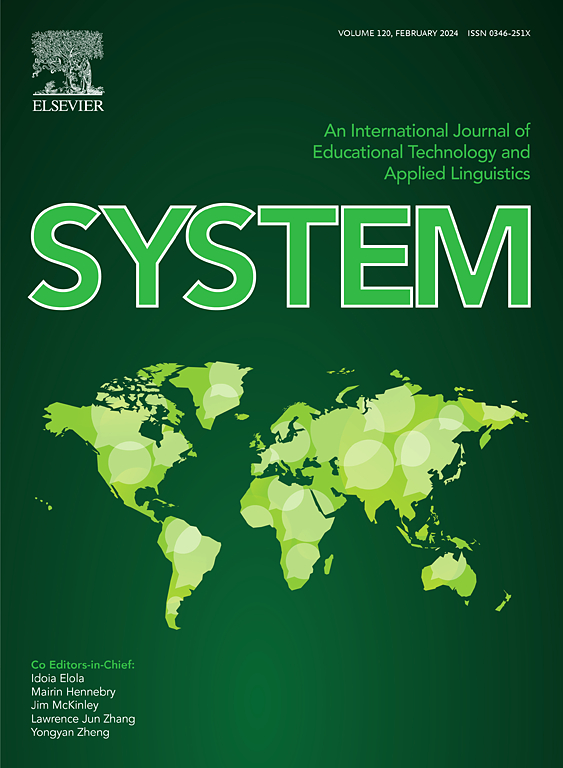The reading rainbow of young multilingual learners: Reading comprehension in the majority (Spanish), regional (Basque) and foreign (English) language
IF 5.6
1区 文学
Q1 EDUCATION & EDUCATIONAL RESEARCH
引用次数: 0
Abstract
Reading comprehension is crucial in education, serving as the foundation for acquiring knowledge. In multilingual settings, children must develop these skills in multiple languages. However, there is limited understanding of comprehension levels across languages and of the role of influencing factors such as language exposure, non-verbal intelligence (NVI), socioeconomic status (SES), and extramural reading (ER). This study explores how these variables impact the reading comprehension of young learners (aged 10–11) in English (foreign language), Spanish (main language), and Basque (regional language for Basque-immersion participants). The participants were divided into a high-intensity (HI) group (N = 118) and a low-intensity (LI) group (N = 81) within Basque-immersion programs. Results showed correlations among reading comprehension scores in Spanish, English, and Basque. While both groups demonstrated similar Spanish comprehension levels, the HI group excelled in English, particularly among high-NVI learners. LI learners scored lower in Basque compared to Spanish. Regression analyses indicated that NVI and, to a lesser extent, SES influenced reading comprehension across languages. Also, HI learners engaged more in English ER, whereas LI learners favored Basque. However, ER did not have a significant impact on their reading scores. Based on these findings, pedagogical implications for multilingual education contexts will be discussed.
年轻多语学习者的阅读彩虹:多数语言(西班牙语)、地区语言(巴斯克语)和外语(英语)的阅读理解
阅读理解在教育中起着至关重要的作用,是获取知识的基础。在多语言环境中,儿童必须用多种语言培养这些技能。然而,人们对跨语言理解水平以及语言暴露、非语言智力(NVI)、社会经济地位(SES)和课外阅读(ER)等影响因素的作用的了解有限。本研究探讨了这些变量如何影响年轻学习者(10-11岁)的英语(外语)、西班牙语(主要语言)和巴斯克语(巴斯克沉浸式参与者的区域语言)的阅读理解。参与者被分为高强度(HI)组(N = 118)和低强度(LI)组(N = 81)。结果显示西班牙语、英语和巴斯克语的阅读理解得分之间存在相关性。虽然两组都表现出相似的西班牙语理解水平,但HI组在英语方面表现出色,特别是在高nvi学习者中。与西班牙语相比,LI学习者巴斯克语的得分较低。回归分析表明,NVI和社会地位在较小程度上影响了不同语言的阅读理解。此外,HI学习者更多地使用英语ER,而LI学习者更喜欢巴斯克语。然而,ER对他们的阅读成绩没有显著影响。基于这些发现,我们将讨论多语言教育背景下的教学意义。
本文章由计算机程序翻译,如有差异,请以英文原文为准。
求助全文
约1分钟内获得全文
求助全文
来源期刊

System
Multiple-
CiteScore
8.80
自引率
8.30%
发文量
202
审稿时长
64 days
期刊介绍:
This international journal is devoted to the applications of educational technology and applied linguistics to problems of foreign language teaching and learning. Attention is paid to all languages and to problems associated with the study and teaching of English as a second or foreign language. The journal serves as a vehicle of expression for colleagues in developing countries. System prefers its contributors to provide articles which have a sound theoretical base with a visible practical application which can be generalized. The review section may take up works of a more theoretical nature to broaden the background.
 求助内容:
求助内容: 应助结果提醒方式:
应助结果提醒方式:


